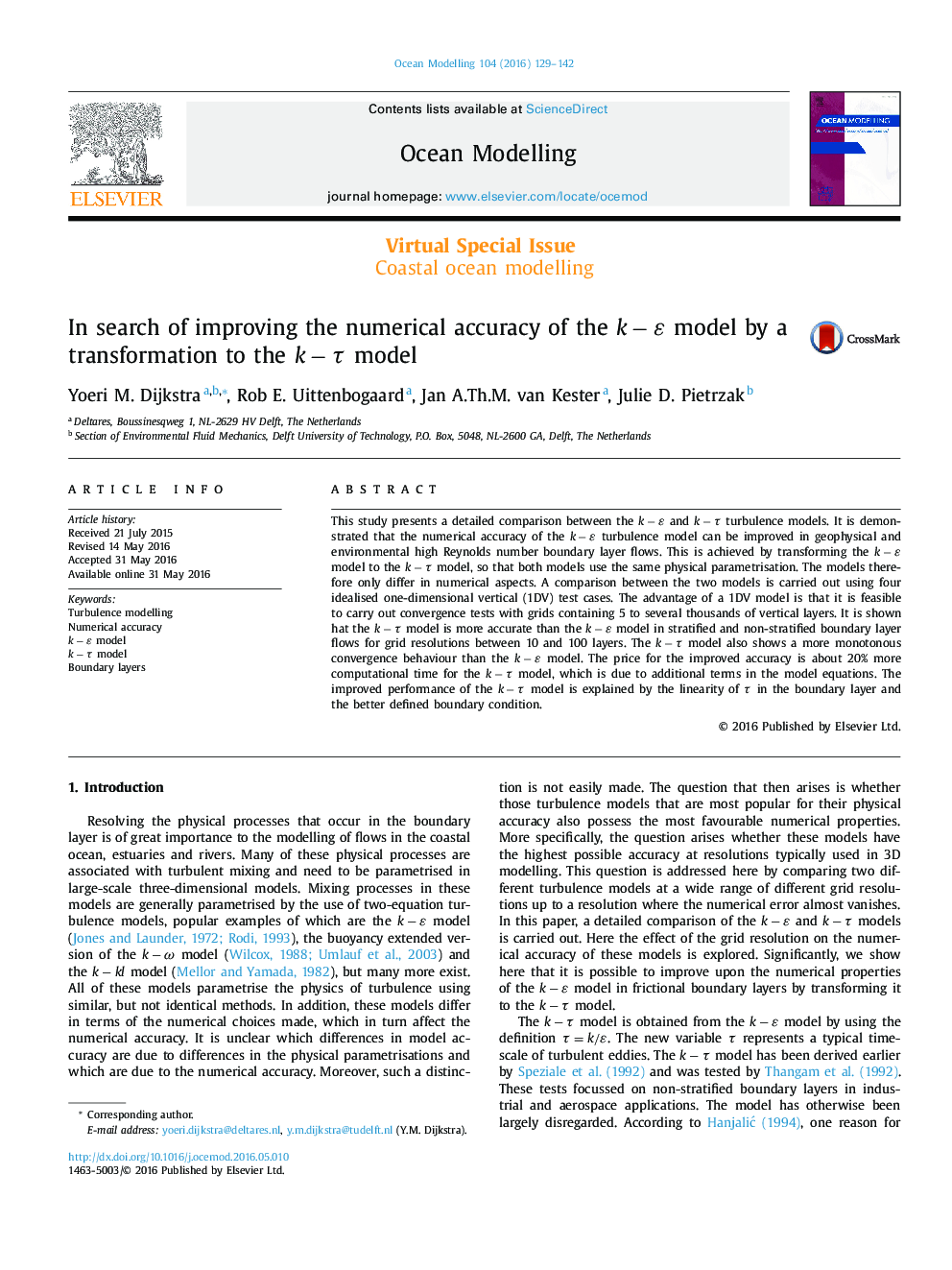| Article ID | Journal | Published Year | Pages | File Type |
|---|---|---|---|---|
| 6387977 | Ocean Modelling | 2016 | 14 Pages |
Abstract
This study presents a detailed comparison between the kâÉ and kâÏ turbulence models. It is demonstrated that the numerical accuracy of the kâÉ turbulence model can be improved in geophysical and environmental high Reynolds number boundary layer flows. This is achieved by transforming the kâÉ model to the kâÏ model, so that both models use the same physical parametrisation. The models therefore only differ in numerical aspects. A comparison between the two models is carried out using four idealised one-dimensional vertical (1DV) test cases. The advantage of a 1DV model is that it is feasible to carry out convergence tests with grids containing 5 to several thousands of vertical layers. It is shown hat the kâÏ model is more accurate than the kâÉ model in stratified and non-stratified boundary layer flows for grid resolutions between 10 and 100 layers. The kâÏ model also shows a more monotonous convergence behaviour than the kâÉ model. The price for the improved accuracy is about 20% more computational time for the kâÏ model, which is due to additional terms in the model equations. The improved performance of the kâÏ model is explained by the linearity of Ï in the boundary layer and the better defined boundary condition.
Related Topics
Physical Sciences and Engineering
Earth and Planetary Sciences
Atmospheric Science
Authors
Yoeri M. Dijkstra, Rob E. Uittenbogaard, Jan A.Th.M. van Kester, Julie D. Pietrzak,
